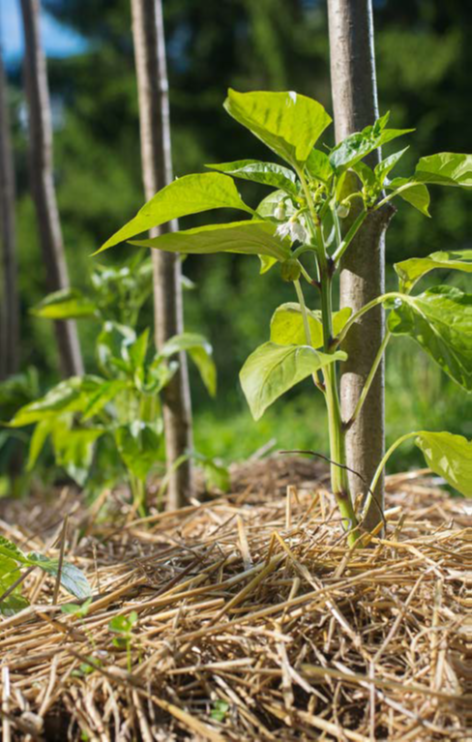
Simple to grow and delicious to eat, peppers are perfect for container gardening at home. These plants like the long, warm growing season of sunny Southwest Florida. Many varieties of peppers, from sweet bells to spicy chiles, can be grown easily in your backyard or on your patio.
Pepper history
Peppers are one of the oldest cultivated fruits in the world, originating out of central Mexico 7,000 years ago. The word chili comes from the Nahuatl (Aztec) word “chil” and refers to all plants in the Capsicum (pepper) genus. Indigenous people considered peppers to be a staple of their diets. Starting in the 14th and 15th centuries, Portuguese and Spanish traders saw an opportunity to capitalize upon the plant and spread it across Europe and Asia.
Did you know?
The chemical responsible for hot peppers’ burning sensation is capsaicin. It functions as an irritant to mammals and as a deterrent against eating the plant’s fruit. Birds, however, do not feel the sting of capsaicin. Unlike mammals, who chew and grind the seeds thoroughly while eating, birds swallow the fruit whole, and pass the seeds unharmed.
For those wanting a sweet snack, the ‘Red Knight’ bell pepper and ‘Sweet Banana’ pepper cultivars will fill that need. Be warned, if you are starting your pepper seeds in the summer, you may have to wait until nights become longer and cooler to see your bells swell and change color. If you instead desire a spicy kick, you might try ‘Big Chile II’ and ‘Long Cayenne’ varieties. Hot peppers are generally more heat-and drought-tolerant than sweet peppers and can produce an astounding amount of fruit once established. You can find a more extensive list of recommended Florida pepper cultivars on the University of Florida’s Gardening Solutions website.
Grow Your Own Peppers
STEP 1: Choose nutrient rich, well-draining soil for your peppers. If you start from seed, most seedstarting mixes available at your local nursery will work just fine. Keep the soil moist and in a sunny spot.
STEP 2: Once the peppers have grown three inches, step them up into a larger container. Replace the seed-starting soil with an organic all-purpose container or raised bed mix. If you want to make your own mix, one-third soil, one-third mulch, and one-third sand works well. If you are growing multiple plants in one container, space them 18 to 24 inches apart.
STEP 3: As your peppers grow, lay down mulch to keep the soil cool and moist. A continuous-release fertilizer will help boost the nutrient uptake. Place the fertilizer under the mulch around the base of each plant, and water thoroughly.
STEP 4: As the plants grow and start to bear fruit, you may have to stake or tomato cage them to help support their weight. Avoid pulling the peppers by hand as you can easily snap a branch.
Light + moisture is key
Place the plants in a sunny spot. Peppers need six to eight hours of sunlight per day. All that sunlight is drying, so be certain to water every two to three days to maintain pepper production. Feel beneath the soil to check moisture levels. With these gardening tips in mind, you will be able to grow and enjoy delicious peppers in your own home.



This article originally appeared in the Spring 2023 issue of Cultivate, the Garden’s magazine.

About the Author
Kyle Possai is the Youth and Family Program Supervisor.

